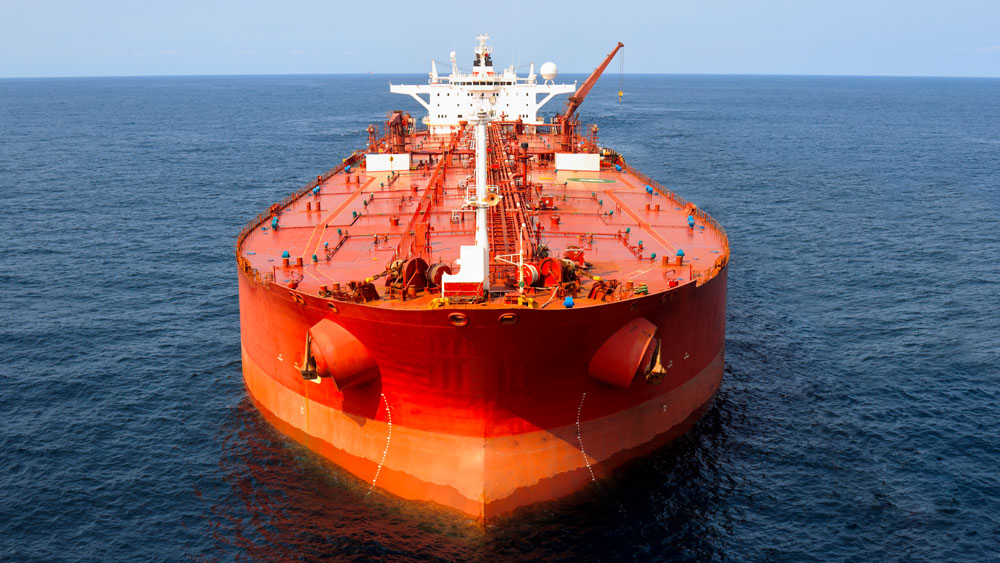
In order to move people and products across oceans, naval architects have designed behemoth-sized floating vessels – some greater in length than the Empire State Building. As developers of some of the largest moving human-made structures, naval architects and engineers must take into consideration the challenging waterscape that ships must endure to reach their destination.
As Dr. Jeffery Falzarano explained, unlike a car, which can instantly react to the input of its driver, a ship does not have an immediate reaction time. Nor does it have tire-to-road friction to aid in turning and speed changes. While a car can stop almost instantly, emergency braking for a ship can take distances of a mile or more.
Furthermore, these ships must be able to withstand waves and, on occasion, storms. Recently, a Noble Corp drillship survived Hurricane Ida in the Gulf of Mexico. Though an extravagant example of what ships are pitted against in the sea, it does beg the question: with the added difficulties of wave dynamics, wind and other environmental influences, how do ships stay afloat and carry goods across the seas?
Falzarano, a professor in the Department of Ocean Engineering at Texas A&M University with almost 40 years of experience in naval architecture, has conducted projects for organizations, including the National Science Foundation, the Office of Naval Research, the U.S. Coast Guard and the American Bureau of Shipping. He offered a bit of insight.
Shape and buoyancy
While there is not a golden rule for ships of all sizes, there are a few general concepts that engineers must keep in mind before they embark. At the most basic level is the shape of the ship and how it affects buoyancy.
“Basically, you have the volume of water and the volume of the hull,” Falzarano said. “The hull is going to displace a certain amount of water. And that displaced mass of water is equal to the mass of the ship. There's a center of that volume of displaced water and, as the ship moves, that center will move to create a restoring moment that will help the ship resist heeling over or capsizing.”
The u-shaped hull of a ship adds to its buoyant nature, filling it with more air than cargo, and also giving it a better balance.
Load Lines
Ships – constructed with steel and welded at the seams – weigh tons. Add to that the additional heft of cargo containers and products, it’s a wonder that ships don’t sink to the bottom of the sea.
That’s in part thanks to Plimsol marks or load lines – horizontal lines painted on the outside of a ship representing the maximum depth a ship can be safely be submerged during various seasons and water types. This visualization helps reduce the risk of overloading a ship and, in turn, allows for greater stability and less stress on the ship’s hull.
Tipping point
Imagine an invisible line drawn vertically down the center of a ship when it’s upright. That’s the metacenter. It helps to mathematically visualize the ship’s ability to resist overturning at small angles.
When a ship tips due to wind or waves, there is a righting motion caused by several engineered elements that brings the vessel upright once more. This includes the structural weights like how high or low the deck is placed, setting the heavier equipment and cargo below deck to create a low center of gravity and the use of ballast, which provides resistance to lateral forces imparted on the hull.
“It’s important to understand that the waves, the wind – basically everything is random and we want to quantify that randomness,” Falzarano said. “These vessels are constantly exposed to random influences, some minor and others catastrophic, and so these changes have to be calculated for the lifetime of the vessel.”
However, there comes a point in which a ship cannot correct itself and will capsize. This is the tipping point or angle of vanishing stability. Knowing at what angle a ship can safely roll and when it is in danger are crucial for naval architects and pilots alike as they work to keep the lives of those on board safe.
“Sometimes accidents do happen, and that’s why you need highly skilled people operating and designing ships,” Falzarano said. “You see a lot of people with advanced degrees working in the offshore industry because they're faced with difficult and new problems that haven't been solved before. So, I think we, as ocean engineers and naval architects, fulfill a very important purpose. And I think we should continue to do that.”
Falzarano is currently teaching two naval architecture courses in the department, arming students with the fundamental knowledge to become experts in designing the next generation of ships and offshore vessels.